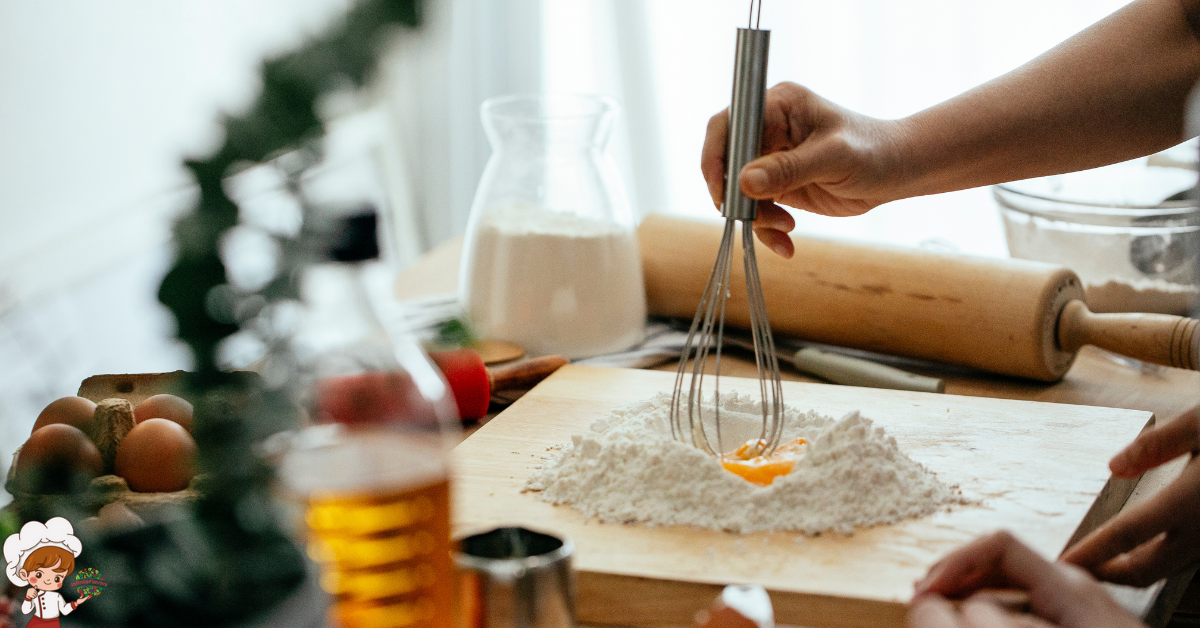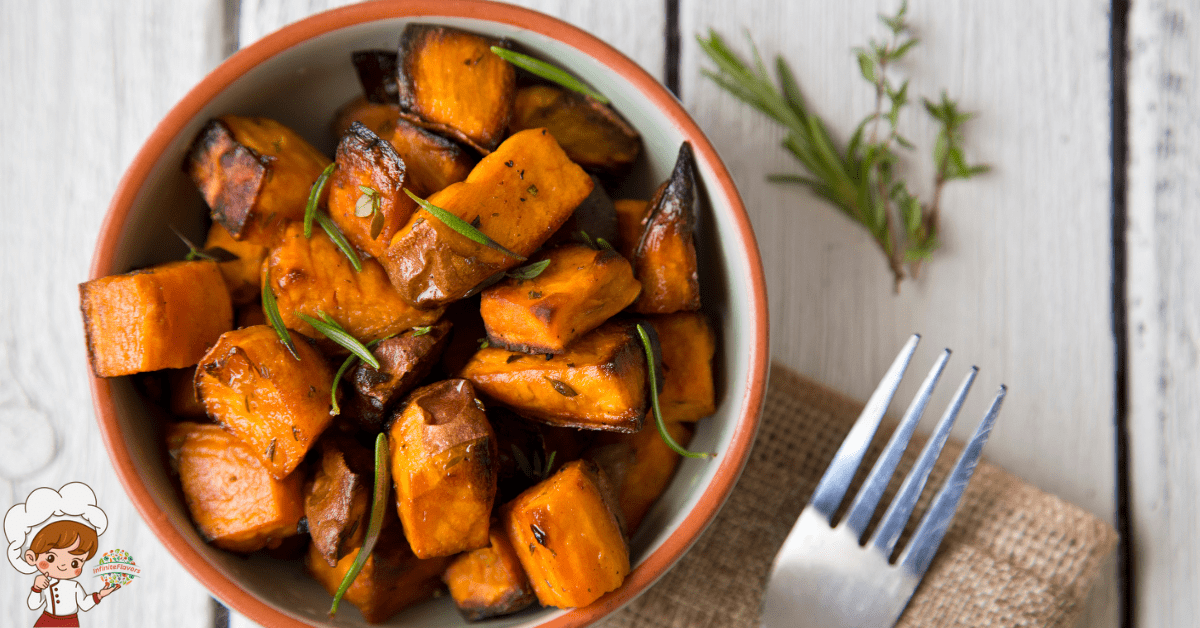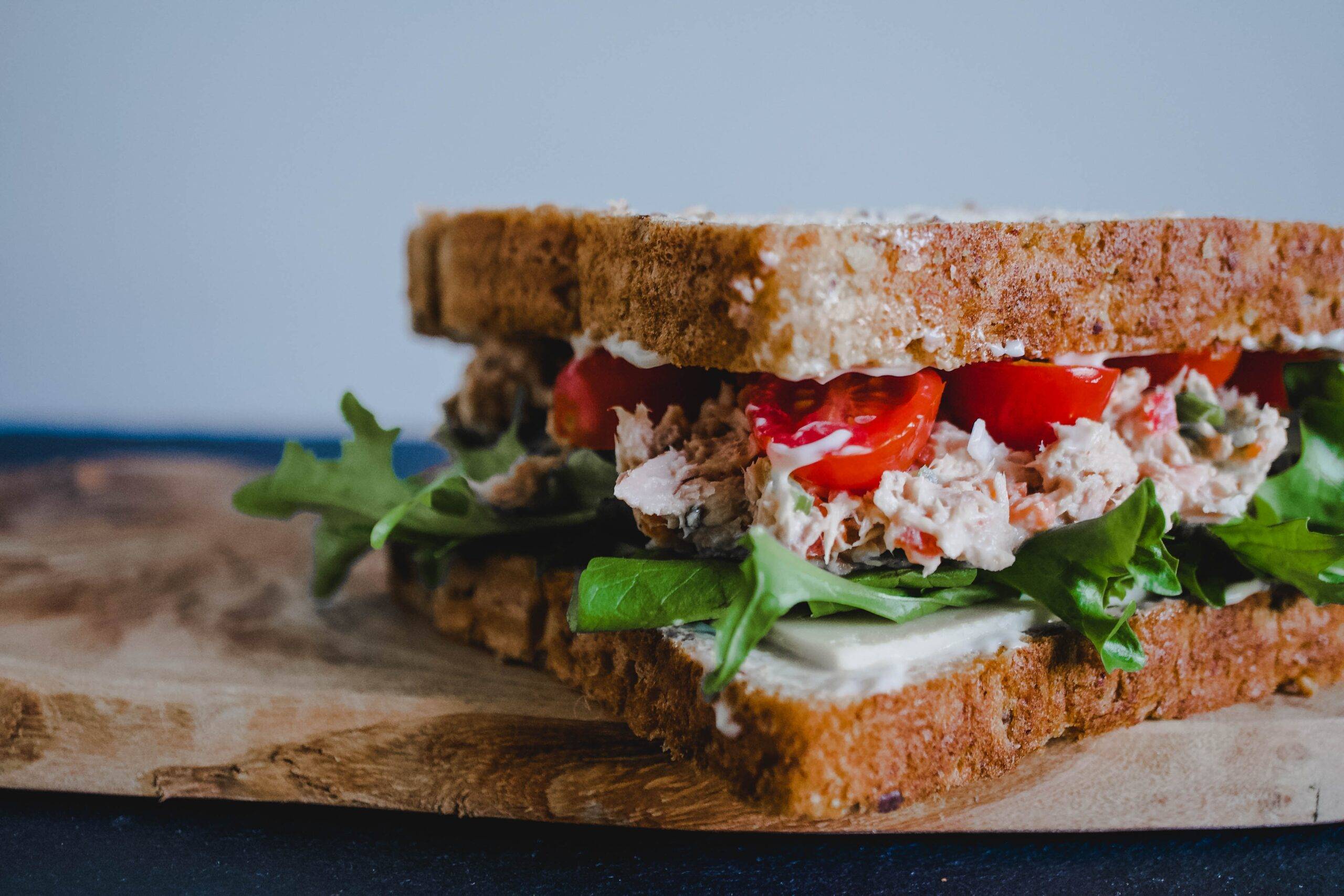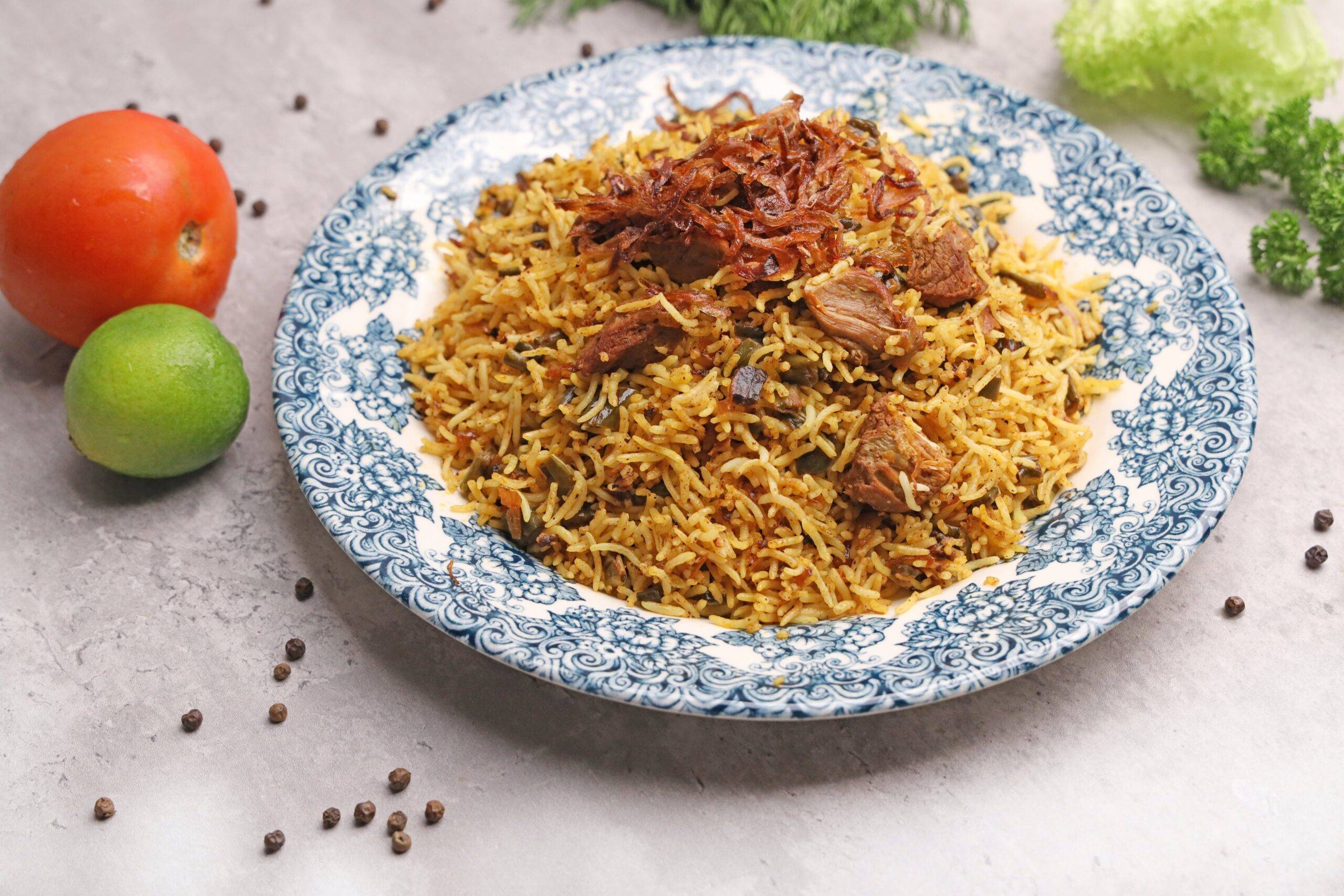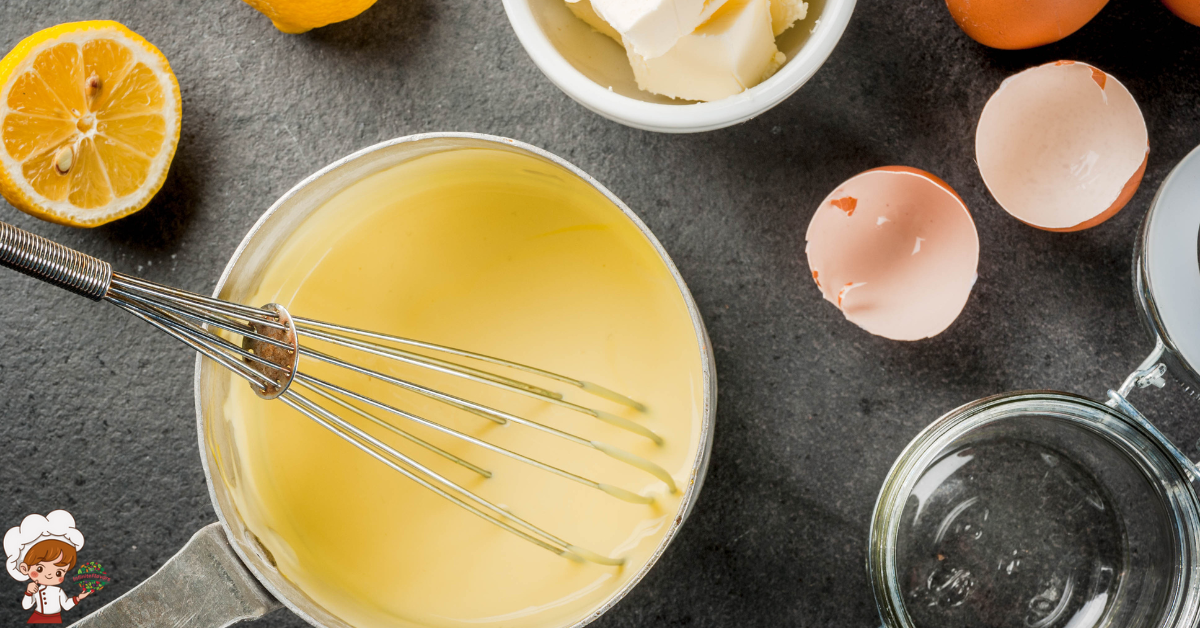How To Best Freeze Peaches
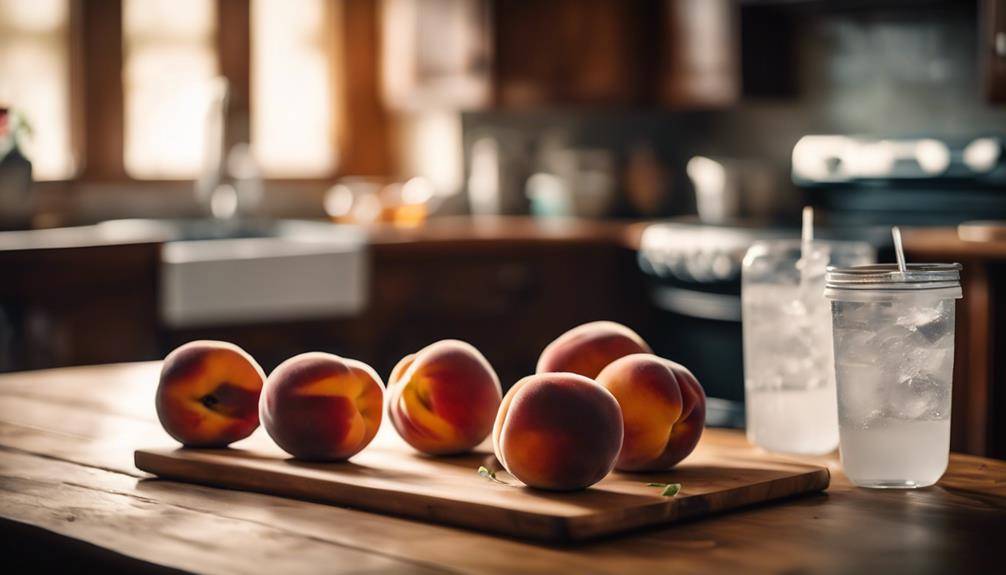
How To Best Freeze Peaches, start by selecting firm, ripe peaches without blemishes. Wash them thoroughly and pat them dry. Blanch the peaches briefly to make peeling easier, then pit and slice them into your desired thickness. To prevent browning, soak the slices in a mix of lemon juice and water for 5-10 minutes. Spread the slices in a single layer on a baking sheet to freeze initially, then transfer them to airtight containers or bags. Make sure to label them with the date, so you keep track of freshness. There’s more to explore on this preserving method!
Selecting the Right Peaches
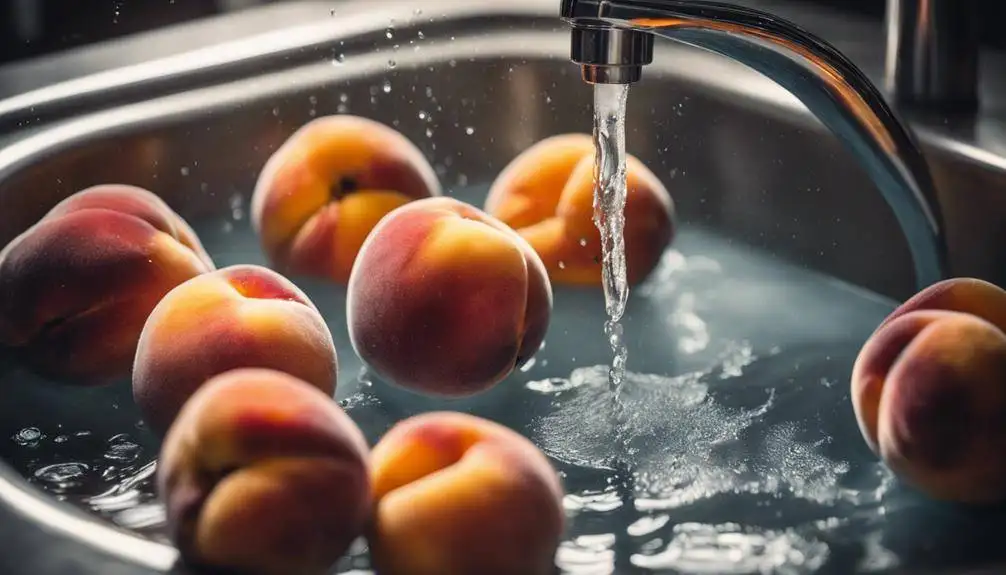
When selecting peaches for freezing, look for firm, ripe fruits that have a sweet aroma and vibrant color. The right peaches make all the difference when it comes to flavor and texture after freezing. You’ll want to choose peaches that are in season, as this is when you’ll find the best variety and quality. Different peach varieties, like Freestone and Clingstone, have distinct characteristics. Freestone peaches, where the flesh separates easily from the pit, are often preferred for freezing because they’re easier to work with. Clingstone peaches tend to be juicier but can be more challenging to prepare.
When you’re at the market or grocery store, keep an eye out for the seasonal availability of peaches in your area. Generally, peak peach season runs from late spring to early fall, but this can vary based on location. During this time, you’ll likely find a wider selection of fresh peaches, guaranteeing you get the best flavors for your freezing project.
Inspect each peach for any blemishes or soft spots, as these can indicate over-ripeness or spoilage. A peach should yield slightly to pressure but shouldn’t feel mushy. Remember, you want to freeze the best peaches possible to enjoy their flavor and texture later. By selecting the right peach varieties during their peak availability, you’ll guarantee that your frozen peaches will taste just as delicious months down the line.
Preparing Peaches for Freezing
Before freezing your peaches, you need to select ripe ones that are perfect for preserving. Once you’ve got your fruit, make sure to wash them properly to remove any dirt or pesticides. These steps are essential for ensuring your frozen peaches taste great later on!
Selecting Ripe Peaches
To guarantee your frozen peaches taste delicious, choose fruits that are firm yet slightly soft to the touch, indicating they’re ripe and ready for freezing. Look for peach ripeness indicators like a vibrant color and a sweet aroma. The skin should have a slight give when you press it gently, but it shouldn’t be mushy. Ideal peach varieties for freezing include freestone peaches, which allow for easier pitting and better texture after thawing.
When selecting peaches, avoid any that have bruises, blemishes, or signs of overripeness. These imperfections can negatively affect the flavor and texture once frozen. If you find peaches that are still a bit hard, you can leave them at room temperature for a day or two to ripen further.
Keep in mind that the best time to freeze peaches is during peak season, typically late summer, when they’re at their sweetest and most flavorful. If you’re unsure about the ripeness, remember that a little patience goes a long way in ensuring your frozen peaches will deliver that fresh taste you crave in the winter months.
Proper Washing Techniques
After selecting ripe peaches, it’s important to wash them properly to remove any dirt or pesticide residues before freezing. Start by gathering your washing tools: a clean sink or bowl, soft-bristled brush, and lukewarm water. Rinse each peach under cool running water to loosen any debris.
For effective cleaning methods, you can use the soft brush to gently scrub the skin, focusing on areas that might hold dirt. This is especially helpful if the peaches have fuzzy skin, as it can trap particles. Avoid using soap or detergents, as they can leave residues that affect the flavor.
If you prefer, you can create a natural fruit wash by mixing three parts water with one part white vinegar. Soak the peaches in this solution for about five minutes, then rinse them thoroughly under cool water to remove any vinegar taste.
After washing, pat the peaches dry with a clean towel. Ensuring they’re completely dry helps prevent freezer burn. Now you’re ready to slice and freeze your peaches, preserving their freshness for later enjoyment!
Washing and Drying Peaches

Before freezing your peaches, you need to wash them properly to remove any dirt or pesticides. Once washed, effective drying methods will help prevent ice crystals from forming during freezing. Let’s explore the best techniques for both washing and drying your peaches.
Proper Washing Techniques
When you’re ready to freeze peaches, start by giving them a thorough wash to remove any dirt or pesticides. Safe washing is vital for ensuring the fruit is clean and safe to eat. Begin by filling a clean sink or large bowl with cold water. You can use a gentle vegetable brush or your hands to scrub the peaches, making sure to get into any crevices.
If you want to be extra cautious, consider using a solution of water and vinegar—one part vinegar to three parts water—to help eliminate any lingering residues. Soak the peaches in this solution for about five minutes, then rinse them under cold running water. This method not only helps remove pesticides but also helps kill any bacteria on the surface.
While washing, avoid using soap, as it can leave harmful residues. After washing, it’s important to use suitable washing tools that don’t damage the delicate skin of the peaches. Once you’ve thoroughly cleaned your peaches, you’re ready to move on to the next step in the freezing process. Remember, clean peaches lead to better preservation and taste!
Effective Drying Methods
Once your peaches are clean, it’s important to dry them properly to prevent ice crystals from forming during freezing. Start by placing the peaches on a clean kitchen towel or paper towels. This helps absorb excess moisture. If you want to speed up the process, consider using dehydration techniques. A food dehydrator can be effective, but if you don’t have one, air drying works just as well.
To air dry, spread the peaches out in a single layer, making sure they’re not touching. Leave them in a cool, dry area with good airflow for several hours. You can also place them in a sunny spot, but make certain to rotate them occasionally to guarantee even drying.
Once the peaches feel dry to the touch but aren’t completely shriveled, they’re ready for freezing. This step is vital because any moisture left can lead to unwanted ice crystals and affect the texture. Remember, thorough drying not only preserves flavor but also guarantees the best quality when you thaw and enjoy your frozen peaches later. So, take the time to dry them right!
Peeling Peaches Easily
To peel peaches easily, start by blanching them in boiling water for about 30 seconds. This quick method helps loosen the skin, making it much simpler to remove. After blanching, immediately transfer the peaches to a bowl filled with ice water. This stops the cooking process and cools them down quickly. Once they’re cool enough to handle, you’ll find the skins slide off effortlessly.
For best results, choose ripe peaches. Overripe or underripe peaches can be tricky to peel, so aim for that sweet spot. After blanching, use your fingers or a paring knife to gently pull the skin away from the flesh. If you’re looking for additional peach peeling techniques, you can also try using a peeler, but this method isn’t always as effective as blanching.
If you’re working with a large batch, consider using quick peeling methods like cutting an ‘X’ at the bottom of each peach before blanching. This creates an easier starting point for peeling and guarantees that the skin comes off cleanly.
Once you’ve peeled your peaches, you’re ready to move on to slicing or freezing them. Remember, the key to peeling peaches effectively lies in the blanching process. So, keep a pot of boiling water and a bowl of ice ready, and you’ll breeze through peeling your peaches in no time!
Slicing Peaches for Freezing
When it comes to slicing peaches for freezing, you’ll want to start with ripe fruit for the best flavor and texture. Knowing the right slicing techniques can make a big difference in how your peaches freeze and later taste. Let’s explore how to choose the perfect peaches and slice them properly for freezing.
Choosing Ripe Peaches
Picking ripe peaches is essential for freezing, as their natural sweetness and flavor will shine through when you thaw them later. To guarantee you’re selecting the best peaches, familiarize yourself with different peach varieties. Each variety has its unique flavor profile and texture, so consider your preferences when choosing.
When evaluating ripeness, look for key ripeness indicators. Ripe peaches should have a vibrant color, which can vary based on the variety. They should feel slightly soft when gently squeezed, but not mushy. Additionally, a sweet aroma near the stem end is a good sign that the peach is ripe and flavorful.
Avoid peaches with green patches, as this indicates they were picked too early. If you find peaches that are slightly under-ripe, you can let them sit at room temperature for a day or two until they reach the desired ripeness. Be sure to check them regularly, as they can ripen quickly. By taking the time to choose ripe peaches, you’ll guarantee your frozen stash is bursting with the delicious flavors of summer, ready to enjoy all year round.
Proper Slicing Techniques
Start by washing the peaches thoroughly to remove any dirt or residue before slicing them for freezing. Once they’re clean, gather your slicing tools—sharp knives and a cutting board work best. You want to use a sharp knife to guarantee smooth, even cuts without crushing the fruit.
Next, place the peach on the cutting board and slice it in half along the natural seam. Twist the halves gently to separate them. If the pit is stubborn, use your knife to carefully pry it out.
Now, take each half and slice it into wedges. The size of the wedges depends on your preference, but aim for uniform pieces so they freeze evenly. A good slicing technique involves steady, even pressure and making sure you cut all the way to the skin for maximum fruit exposure.
Once sliced, you can choose to flash freeze the pieces on a baking sheet for about an hour before transferring them to freezer bags. This prevents them from sticking together, making it easier to grab just what you need later. Happy freezing!
Preventing Browning in Peaches
To keep your peaches looking fresh and appealing, treat them with an ascorbic acid solution right after slicing. This antioxidant solution is one of the most effective browning prevention methods you can use. Ascorbic acid, commonly found in vitamin C, helps slow down the enzymatic process that causes browning. You can easily prepare this solution by mixing about one tablespoon of ascorbic acid powder or crushed vitamin C tablets in a quart of water.
Once you’ve sliced your peaches, immerse them in the ascorbic acid solution for about five to ten minutes. This quick dip not only preserves their vibrant color but also enhances their flavor. After soaking, remove the peaches and allow them to drain briefly. If you prefer, you can also sprinkle them with a mixture of sugar and ascorbic acid for added sweetness and protection.
Another effective method is to use lemon juice, which contains natural antioxidants. Mix one part lemon juice with three parts water, and follow the same soaking procedure. While this method works well, keep in mind that lemon juice can alter the flavor slightly.
Choosing Freezing Methods
When it comes to freezing peaches, you’ll want to choose a method that best maintains their flavor and texture. There are several freezing techniques available, and each has its advantages. The most popular methods include syrup packing, dry packing, and flash freezing.
Syrup packing involves dipping peach slices in a sugar syrup before freezing. This method enhances flavor preservation by adding sweetness and preventing ice crystals from forming. You can adjust the sugar content to your taste, making it a flexible option.
Dry packing is another straightforward technique. Simply wash, slice, and pack the peaches into freezer-safe bags or containers without any added syrup. This method is quick and allows the natural flavor of the peaches to shine through. Be sure to remove as much air as possible to minimize freezer burn.
Flash freezing is an excellent option if you want to freeze individual slices. Lay the peach slices on a baking sheet in a single layer and place them in the freezer for a few hours. Once they’re frozen solid, transfer them to a bag or container. This technique prevents clumping and offers easy portion control.
Ultimately, your choice of freezing method should reflect your preferences for flavor preservation and convenience. Whichever technique you choose, proper preparation guarantees that your peaches will taste delicious when you’re ready to enjoy them later.
Packing Peaches for Freezing
Packing peaches for freezing requires attention to detail to guarantee they maintain their quality and flavor. Start by selecting the right peach varieties. Freestone peaches are often preferred for freezing because they’re easier to slice and pit. Once you’ve chosen your peaches, wash them thoroughly to remove any dirt or residues.
Next, you’ll want to slice your peaches. Cut them into halves or quarters, depending on your preference. Removing the skin is optional, but if you prefer skinless peaches, blanch them briefly in boiling water before peeling. After slicing, you can choose to toss the peach slices in a mixture of lemon juice and sugar to help preserve their color and taste.
Now it’s time to pack the peaches into freezing containers. You can use freezer bags, plastic containers, or glass jars, ensuring they’re suitable for freezing. If you’re using bags, lay them flat to save space in your freezer. Fill your containers with the peach slices, leaving some headspace to allow for expansion during freezing. For added protection against freezer burn, consider wrapping peach slices in plastic wrap before placing them in the containers.
Labeling and Storing Peaches
Label your containers with the date and type of peaches to keep track of their freshness and guarantee you use them within the recommended storage time. Proper labeling is fundamental for effective organization in your freezer. Use waterproof markers or labels to make certain that the information remains clear, even if condensation forms inside the container.
When labeling containers, include not just the date but also any relevant details, such as whether the peaches are sliced, diced, or whole. This way, you can quickly identify what you need for your recipes without having to open each container.
It’s also vital to take into account the storage duration. Frozen peaches are best used within 6 to 12 months for peak flavor and texture. If you haven’t used your peaches within this timeframe, you might notice a decline in quality. So, keep an eye on those labels!
Store your containers in a consistent spot in the freezer to make retrieval easier. Organizing them in a way that prioritizes older peaches will help you avoid waste. You might want to place the most recent batches toward the back, making sure that you consume the older fruit first.
Thawing Frozen Peaches
After you’ve organized and labeled your frozen peaches, it’s important to know the best ways to thaw them for use in your favorite recipes. There are several effective thawing methods you can choose from, depending on how quickly you need your peaches ready.
The simplest method is to transfer your frozen peaches from the freezer to the fridge. This gradual thawing process usually takes several hours or overnight, but it helps maintain the fruit’s texture and flavor. If you’re in a hurry, you can use the cold water method. Just place the sealed bag of peaches in a bowl of cold water, changing the water every 30 minutes until they’re thawed. This usually takes about an hour.
For immediate use, you might opt for the microwave method. Set your microwave to defrost, and heat your peaches in short intervals, checking regularly to avoid cooking them. While this method is quick, it can sometimes lead to uneven thawing, so keep an eye on them.
Using Frozen Peaches in Recipes
Using frozen peaches in recipes opens up a world of delicious possibilities, from smoothies to desserts. You can easily incorporate these sweet, juicy fruits into various dishes, enhancing both flavor and nutrition. One of the simplest ways to use frozen peaches is in peach smoothies. Just toss a cup of frozen peaches into your blender with some yogurt, a splash of orange juice, and a handful of spinach for a revitalizing breakfast or snack. The frozen peaches give your smoothie a creamy texture and a burst of fruity flavor.
If you’re in the mood for something sweeter, frozen peaches are perfect for peach desserts. You can make a delightful peach cobbler by mixing thawed peaches with sugar, cinnamon, and a crumbly topping. Bake it until it’s golden brown, and you’ll have a warm dessert that pairs perfectly with ice cream. Alternatively, try making peach ice cream or sorbet. Blend the frozen peaches with some sugar and a bit of lemon juice, then freeze the mixture for a revitalizing treat on a hot day.
Frozen peaches are also great in baked goods. Add them to muffins or pancakes for a fruity twist. Just remember to adjust the liquid in your recipe, as frozen peaches release some moisture when they thaw. With these ideas, you can enjoy the taste of summer all year round, making the most of your frozen peaches in numerous delicious ways!
How To Best Freeze Peaches; Frequently Asked Questions
Can I Freeze Peaches With the Skin On?
Yes, you can freeze peaches with the skin on. Peach peeling isn’t necessary since the skin offers nutritional benefits. Just make sure to wash them well before freezing to maintain freshness and flavor.
How Long Can Frozen Peaches Be Stored?
You can store frozen peaches for up to a year. For ideal frozen peach storage, use airtight containers. Follow peach freezing tips to guarantee they maintain their flavor and texture throughout the storage period.
Do Frozen Peaches Lose Their Nutritional Value?
Frozen peaches maintain most of their nutritional value due to quick freezing. You’ll enjoy the frozen benefits, like retaining vitamins and minerals, making them a healthy option for smoothies or desserts throughout the year.
Can I Freeze Canned Peaches?
Yes, you can freeze canned peaches! Just drain the syrup, store them in airtight containers, and label them. When you’re ready to enjoy, use proper thawing methods like refrigerating overnight or using cold water.
What Is the Best Time to Freeze Peaches?
The best time to freeze peaches is when they’re perfectly ripe. You’ll want to use proper freezing techniques to preserve their flavor and texture, ensuring you enjoy sweet, juicy peaches later on.
Conclusion
Freezing peaches is a fantastic way to enjoy their sweet flavor all year round. By selecting ripe peaches and preparing them properly, you’ll guarantee they maintain their taste and texture. Remember to pack them well and label your containers for easy access later. When you’re ready to use them, thawing is simple, and they can be added to a variety of recipes. Enjoy the taste of summer in every bite, even in the depths of winter!




